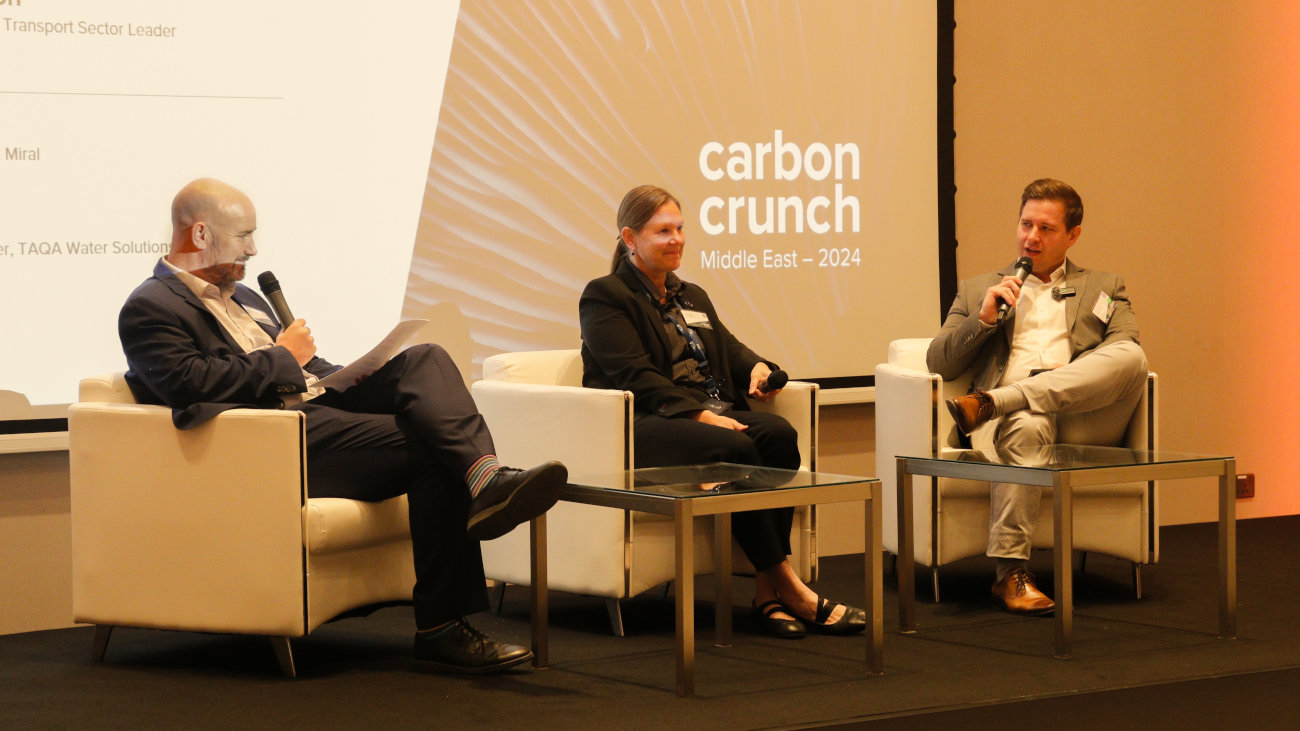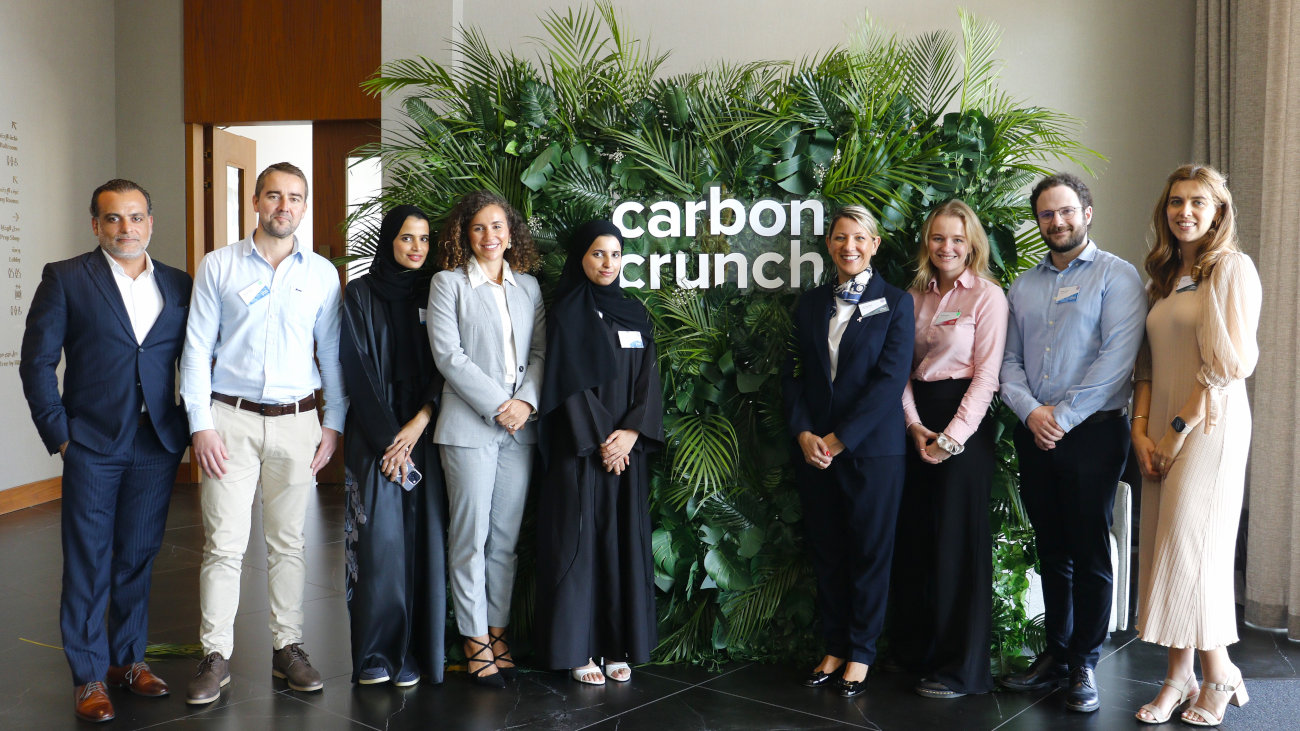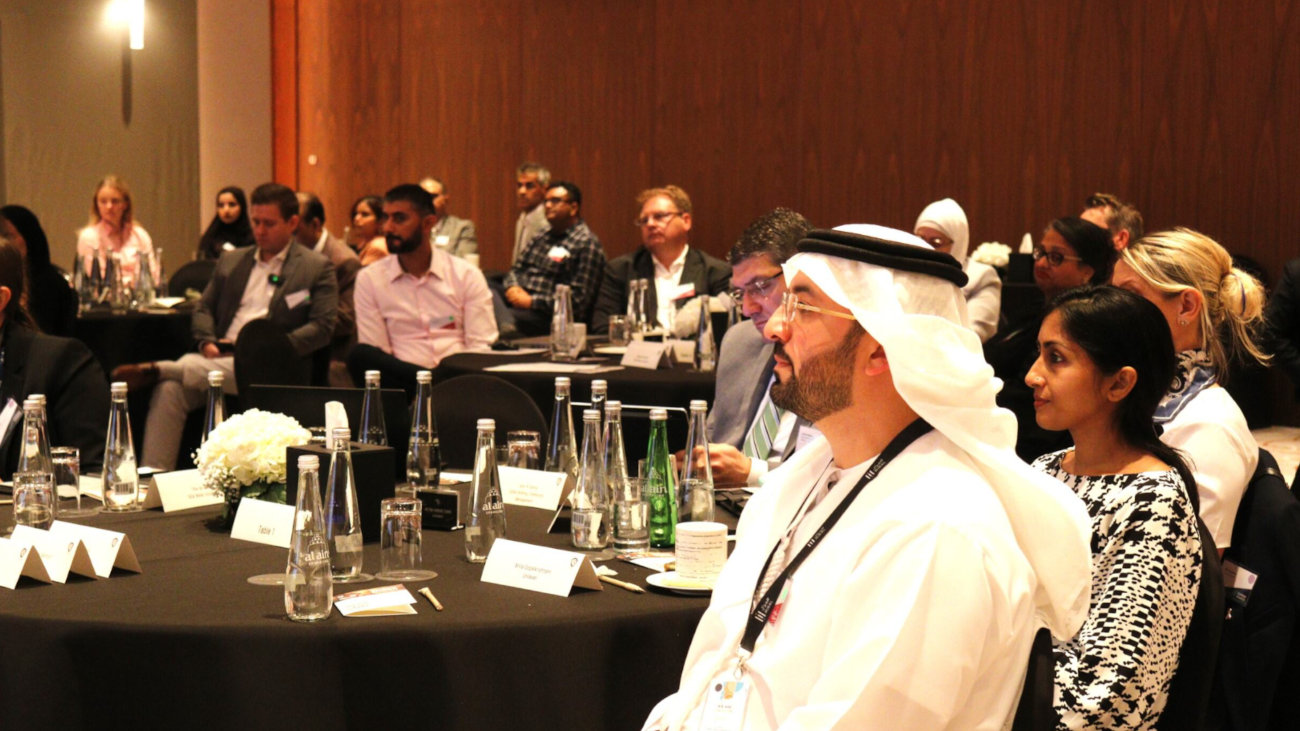Join the Middle East decarbonisation discussion
When decarbonisation conversations start early in the planning of buildings and infrastructure there are better options to reduce whole-life carbon emissions.
Greater collaboration across sectors and supply chains leads to shared benefits, reducing the carbon emissions of assets over their lifetime.
It is important to strike a balance between communicating about long-term decarbonisation targets and short-term progress. 2050 is a long way off.
Greater collaboration and knowledge sharing is vital as organisations across the Middle East strive to make progress on decarbonisation. Read and watch highlights from our first Carbon Crunch Middle East event in Abu Dhabi.
Industry experts from across the built environment, infrastructure, water and energy sectors came together in Abu Dhabi in November 2024 to share different perspectives on decarbonisation and how to address technical, strategic, financial and cultural barriers to change.
The event was the latest in a series of global Carbon Crunch forums, now including Abu Dhabi, to demystify the net zero journey for organisations in the Middle East.
Key topics included transforming net zero targets into practical decarbonisation steps, embedding a carbon culture and the role of emerging technologies in collecting carbon data and reducing emissions.
Speakers emphasised the need for greater collaboration across sectors and supply chains to achieve progress on decarbonisation.
"We often focus on who has the most ambitious targets, who has the lowest carbon footprint and who has the best sustainability report. What matters is collectively doing better,” said Lisa Terry, Middle East climate change practice lead at Mott MacDonald.

One of the best ways to learn is from each other – benchmarking against peers is one way to do that but we should also be sharing new ideas and providing incentives for change across the supply chain, Lisa said.
Read more below from some of our excellent speakers at Miral, TAQA Water Solutions, Elevation Carbon, Aquaai and Mott MacDonald.
How collaboration leads to shared benefits
For leisure and tourism group Miral, a big issue is finding partners who can help to meet carbon reduction goals by addressing the ongoing operational carbon of its assets over their lifetime.
Henro Mans, senior manager for mechanical, electrical and plumbing at the company, said: “We are looking to partner with service providers that are constantly improving how they generate clean and reliable power, supply clean water more sustainably and help us monitor sewage discharge. This helps us improve the operation of our assets, bring in revenue and reinvest.”
“When our partners move forward and reduce their carbon impact, we benefit too through lower Scope 3 indirect carbon emissions,” said Henro.
Dr Titia de Mes, sustainability manager at TAQA Water Solutions, explained how her company is focusing on circular economy by increasing the amount of treated wastewater that it reuses from a peak of 80% to 100%, and diverting the biosolids produced during wastewater treatment from landfill, which will reduce TAQA Water Solution’s operational carbon emissions by about 40%.

Initiated by TAQA Distribution, the company is collaborating on demand-side management measures that could cut community water consumption by 15% to 20% through local treatment and reuse of grey water for toilet flushing and irrigation.
Dr Dila Ersenkal, director for environment and sustainability at Mott MacDonald, explained how PAS 2080, the first carbon management standard for the built environment, is a useful tool for encouraging collaboration and shared benefits. “What I like about PAS 2080 is that it applies to everyone across the whole value chain – asset managers, developers, designers, architects, the supply chain – they all have a role to play to ensure carbon-related targets can be achieved,” she said.
Embedding a low carbon culture can accelerate change
Anila Gopal, global sustainability head, brands and Middle East advocacy at Unilever, said her organisation is trying to change its focus from incremental change – for example, improving the efficiency of manufacturing processes – to transformational change. She said: “We are trying to reimagine what shampoo looks like, how we wash our clothes, how we consume products and electricity. That is uncomfortable.”
At Unilever, she said they are also looking at what motivates staff to change behaviour. “We’re tying sustainability to bonuses and quarterly performance management. We’re looking at sustainability metrics in the short term, quarter by quarter, which is really turning the wheels of change.”
The need for stricter carbon targets
Discussing the future of the built environment, Paul Paterson, chief executive of consultancy Elevation Carbon, said we need to start talking in the language of absolute energy targets and carbon budgets for buildings and other infrastructure, rather than percentage improvements against baseline carbon emissions.
Paul said: “There is not enough attention on how we figure out what the energy and carbon cost of our buildings are, before we are putting pen to paper and before we are starting construction.”

We need to “analyse the performance of a building with greater granularity to understand how you can make better design decisions”, he said. In the car industry, they have to design products that meet a very strict set of performance criteria. If they don't deliver that, there's no market for them. When we design a building, we figure out its energy cost once it’s been operating for a year, Paul explained.
“I think figuring out how to have energy targets set from the start is mission critical. A new Grade A office building should have an energy use density target. The UK is moving to that in the next year with the net zero public buildings standards,” Paul said.
Start-ups need support to scale new technologies
Highlighting the critical need for better protection of our oceans and waterways, Liane Thompson, founder and chief executive of Aquaai, described how her company leverages artificial intelligence, data and fishlike autonomous underwater robots equipped with cameras and environmental sensors to collect and report vital subsurface data. These insights, including pH levels, salinity, dissolved oxygen and water temperature, are used for monitoring ecosystem health, infrastructure, and water quality.
“We can monitor carbon sequestration by mangroves and water toxicity after a flood and provide these datasets to industry, government or city officials through the cloud on a web dashboard,” she said. “Startups put in a lot of hard work to develop water technologies. But scalability is a hurdle because of a lack of funding. Water technologies get only 2% of all climate investment,” said Liane.
“There is not enough action when it comes to water scarcity. We need the integration of autonomous systems for continuous monitoring of water bodies,” said Liane. Aquaai’s software as a service model provides easy access to reliable and affordable data by using 3D printing to make its robots. “There needs to be greater accountability now to protect waterways for future generations,” said Liane.
Early planning creates opportunities to cut carbon
Dr Dila said: “Conversations about decarbonisation should start early in the planning phase when we have the best options and we can avoid greenhouse gas emissions occurring in the first place.”
“We should challenge the status quo: do we really need this pumping station or this railway? Can we reduce whole-life emissions by switching to low carbon concrete, applying different construction methods or using different energy sources? Waiting until the construction or operational phase is too late.”

“At the start of a project there is less available data to inform decisions, but we have the greatest ability to reduce whole-life carbon emissions. As projects move forwards, we might have more data, but we have fewer options to reduce emissions,” said Dr Dila.
Decarbonisation is a marathon, not a sprint
Discussing the challenges of integrated carbon reduction targets into business operations, Paul explained that there is a need to strike a balance between communicating about long-term targets and giving a short-term breakdown of progress.
“What's the story you can tell people to show how things are going to get better? What's the story you can tell yourself about how you are making progress? It's tough because 2050 is so far away,” said Paul.
“A lot of organisations want to see change in one or two years, but in our experience, it takes one or two years to set up the infrastructure to enable long-term change,” added Lisa.
“Decarbonisation is not a sprint. Make sure your decarbonisation strategy is super flexible and set realistic short-term targets that will help you get to where you want to be in the long term,” she added.

Subscribe for exclusive updates
Receive our expert insights on issues that transform business, increase sustainability and improve lives.



